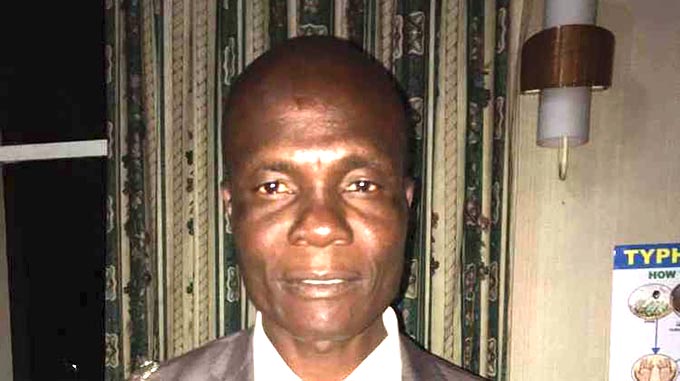Climate finance flows as Zim expects US$10m GCF grant

Climate Story Jeffrey Gogo
The Green Climate Fund (GCF) was expected to approve a project grant of US$10 million over the weekend, to help 10 000 families in rural Masvingo and Rushinga cope with climate change.
Directors of the GCF board are meeting for the 23rd time at the Fund’s headquarters in Songdo, Korea, from July 6 to 8.
The meeting will consider 10 different proposals for funding, with a cumulative value of US$267 million. Two other projects had earlier been thrown out at the technical analysis stage for various shortcomings.
Zimbabwe’s “Integrated Climate Risk Management for Food Security and Livelihoods focusing on Masvingo and Rushinga Districts” is one of the 10 funding proposals that the GCF directors — often criticised for their stringent lending criteria — will look into.
The fact that the project — one of only three from Africa, the other two Ghanian and Kenyan proposals — has reached board consideration, means that the prospect for funding is real.
Mr Elisha Moyo, principal climate change researcher in the Ministry of Climate, who is attending the GCF meeting, told The Herald Business from Korea that “we expect this US$10 million project to be approved over the weekend”.
The component of the funding requirement from the Green Climate Fund will reach US$8,9 million while the Swedish Development Agency and Cooperation has agreed a grant of US$1,1 million as co-funders to a project that will be implemented over four years starting 2020.
If approved, as is largely expected, the latest grant will bring to a total US$12 million that the GCF, amidst criticisms of cumbersome application and lending processes, will have extended to Zimbabwe for climate resilience and other purposes since 2016.
Targeting the vulnerable
Back home, Mr Washington Zhakata, climate change director in the Ministry of Climate, explained that the project aims to directly support long-term adaptation to climate change of 10 000 vulnerable, food insecure households — or about 50 000 people, two thirds of them women — in Masvingo and Rushinga.
Altogether, 102 000 people will benefit, when other indirect outcomes are considered, he said. Implemented with support from the World Food Programme (WFP), which has carried out similar ventures in countries like Ethiopia successfully, the project targets three specific areas. The first one involves strengthening capacity and systems to support national and community adaptation and management of climate risks based on climate forecasts and information.
“This component looks at how communities can utilise information generated by the Meteorological Services Department (MSD) for effective planning in their agricultural activities,” said Mr Zhakata, by phone.
Elements of climate smart agriculture will also be introduced within the disseminations.
The second target centres around increasing the adaptive capacity of food insecure families through community-based asset creation and risk transfer. Mr Zhakata elaborated that the idea was to wean off rural farmers from relying solely on farm output but that “they should go further into value chains such as beekeeping to split the risk of failure from other agricultural activities . . . ”
Thirdly, the project targets to enhancing the investment capacity of small-holder farmers to sustain climate-resilient development gains. Here, farmers are expected to benefit from “increased access to markets and financial services by decreasing post-harvest losses, enhancing quality of product to marketable level and managing contingencies . . . ”
Mr Zhakata detailed that the three inter-locking components “are aimed at strengthening the capacities of the communities to reduce, anticipate and rapidly respond to the effects of climate shocks. We are essentially preparing farmers for any other type of disaster, so this is linked to risk reduction as well as food security.”
Changing terrain
Masvingo and Rushinga are hotspots for climate change impacts and it is for this reason that they were chosen, as demonstration points for a programme that in future will be replicated throughout much of the country.
As temperatures rise, rain has become scarcer in both districts, with only about 650mm (or less) of rain falling each year. Also, the two areas consists of large communal units cultivated by smallholder farmers that depend on rain-fed agriculture.
The project document shows that the impacts of climate change in the two districts are already evident. Farmers say rain has become erratic, the rain season now starts late and ends early.
In Masvingo, for example, Government data shows that food insecurity has risen since 2009, reaching its maximum in 2013 with 37 percent of the district population being food insecure compared to the national average of 25 percent.
“People’s ability to cope with and recover from recurrent climate shocks, particularly women and the elderly, has been progressively eroded, together with their capacity to adapt to a changing environment,” the project document stated.
Countrywide, Zimbabwe’s dependence on rain-fed agriculture has been the bane for its economy — and livelihoods. Scientists rainfall has declined by five percent throughout the country in the last 100 years while temperatures rose 0,4°C, spawning a succession of devastating droughts, no less than 10 in the past quarter Century.
Models show production of major cereals like maize will decline by up to 50 percent by 2050 due to climate change-induced water shortages.
Average annual temperatures are seen climbing between 1°C and 3°C from 2020 to 2099 throughout Zimbabwe, according to the UN’s expert panel on climate change.
“If no adaptation measures are taken, climate change is likely to exacerbate food insecurity, especially during prolonged drought events, which are becoming more frequent and intense,” the report said.
God is faithful.











Comments